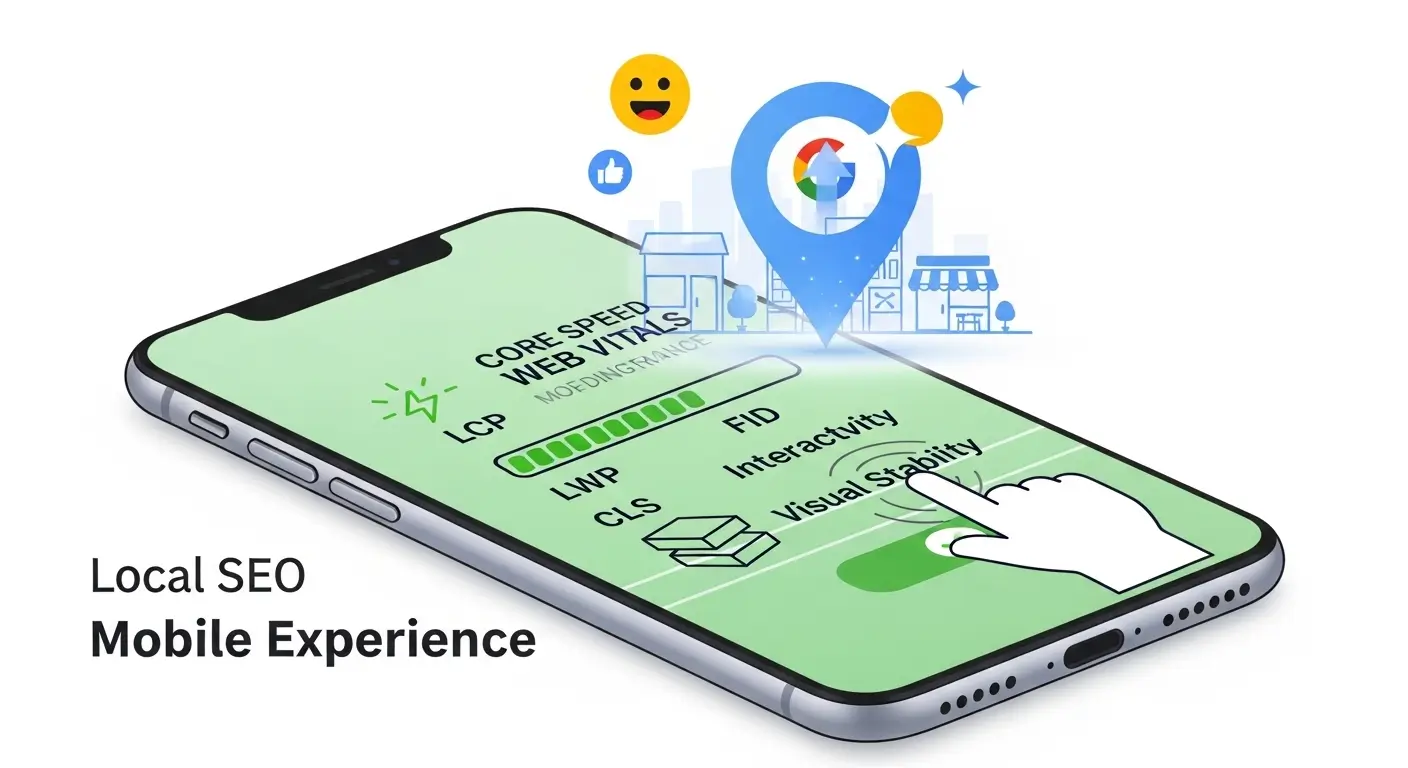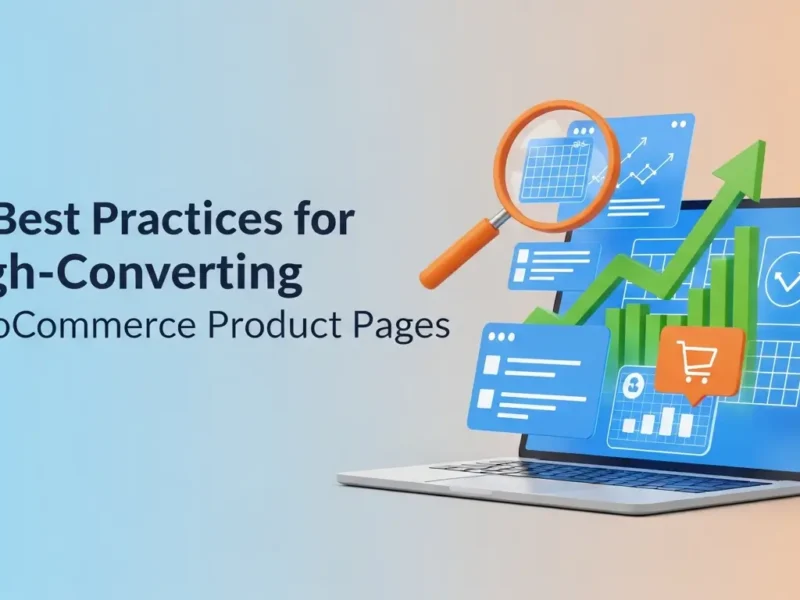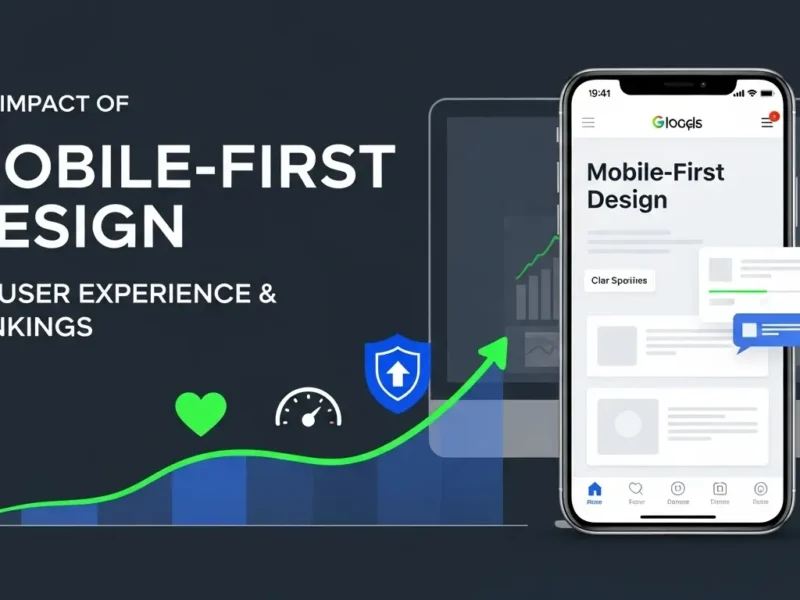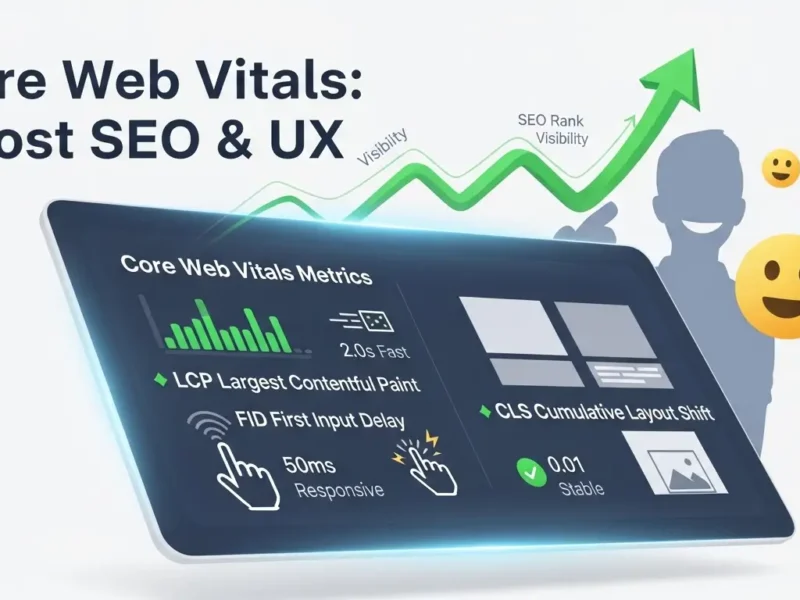In today’s hyper-competitive digital landscape, local businesses face a unique challenge: standing out in a crowded market where customers demand instant gratification. It’s no longer enough to justbeonline; your online presence must be fast, responsive, and visually stable. This is where Core Web Vitals enter the conversation, playing a surprisingly pivotal role in both your Local SEO performance and the overall User Experience (UX) your potential customers encounter.
For local businesses, every click, every page load, and every interaction can mean the difference between a new customer and a lost opportunity. Google’s continuous push towards a more user-centric web experience has elevated Core Web Vitals from technical jargon to essential ranking factors. Ignoring them is akin to putting up a “Closed” sign during business hours – you’re simply turning potential customers away.
This comprehensive guide will demystify Core Web Vitals, connect them directly to your local SEO success, and demonstrate how optimizing these metrics can dramatically enhance your user experience, ultimately driving more foot traffic and online conversions for your local business.
The Foundation: Understanding Core Web Vitals
At their core, Core Web Vitals (CWV) are a set of three specific metrics that Google uses to quantify the user experience of a webpage. They measure how quickly a page loads, how interactive it is, and how stable its content is as it loads. Google rolled them out as part of its “Page Experience” signals, emphasizing that a great user experience is crucial for search rankings.
Let’s break down the triumvirate:
- Largest Contentful Paint (LCP): This metric measures loading performance. It reports the render time of the largest image or text block visible within the viewport. Essentially, it tells you how long it takes for the main content of your page to load and become visible to the user. For an optimal user experience, LCP should occur within 2.5 seconds of when the page first starts loading.
- First Input Delay (FID): This metric measures interactivity. It quantifies the time from when a user first interacts with a page (e.g., clicks a button, taps a link) to when the browser is actually able to respond to that interaction. A low FID indicates that the page is responsive and interactive very quickly. An ideal FID should be 100 milliseconds or less.
- Cumulative Layout Shift (CLS): This metric measures visual stability. It quantifies the amount of unexpected layout shift of visual page content. Imagine clicking a button only for an ad to suddenly appear above it, shifting everything down and making you click something else entirely. That’s a layout shift. A low CLS score means the page’s content remains stable and doesn’t unexpectedly jump around. An ideal CLS should be 0.1 or less.
These metrics are not just arbitrary numbers; they directly reflect real-world user frustrations. A slow-loading site, a page that doesn’t respond, or content that jumps around can drive visitors away in seconds.
The Local Angle: Core Web Vitals & Local SEO Intersect
You might be wondering, “How do these technical metrics specifically affect my local coffee shop or plumbing service?” The connection is profound, impacting both direct ranking signals and crucial user behavior that influences local search performance.
1. Direct Ranking Factor in Local Search:
Google explicitly stated that Core Web Vitals are part of its broader “page experience” ranking signals. While local SEO has unique factors like Google My Business (GMB) optimization, proximity, and relevance, the underlying principle of delivering a good user experience applies universally across all search types, including local queries. A website with strong Core Web Vitals is inherently more likely to rank higher in general search results, which often influences local pack rankings and organic visibility for location-specific queries (e.g., “best pizza near me”).
2. Indirect Impact Through User Behavior:
Even if Core Web Vitals weren’t a direct ranking factor, their impact on user behavior would still make them critical for local SEO.
- Reduced Bounce Rates: When a potential customer searches for “dentist near me” and clicks on your link, a slow-loading site will cause them to hit the back button faster than you can say “appointment.” High bounce rates signal to Google that your site isn’t providing a good experience, potentially hurting your local visibility.
- Increased Engagement & Dwell Time: A fast, responsive, and stable website encourages users to explore more, click on different pages (services, contact, about us), and spend more time on your site. Longer dwell times and higher engagement metrics are positive signals to Google about the quality and relevance of your local business’s website.
- Enhanced Conversion Rates: For local businesses, conversions often mean phone calls, getting directions, booking appointments, or making online reservations/purchases. If your site is sluggish or frustrating, users will abandon these critical actions. Optimizing CWV directly translates to higher conversion rates from your local search traffic.
- Improved Mobile Experience (Crucial for Local): The vast majority of “near me” searches happen on mobile devices. Core Web Vitals are inherently designed with mobile-first indexing in mind. A poor mobile experience due to CWV issues will devastate your local SEO, as Google prioritizes the mobile version of your site for ranking.
- Positive Brand Perception & Reviews: A professional, fast-loading, and easy-to-use website contributes to a positive first impression. This can lead to better customer satisfaction, which, in turn, often translates into positive online reviews – a massive factor in local SEO.
Dissecting the Impact: LCP, FID, CLS in a Local Context
Let’s get specific about how each Core Web Vital metric can make or break your local online presence:
Largest Contentful Paint (LCP) for Local Businesses:
Imagine a customer searching for “pizza delivery” who clicks on your restaurant’s website. If your menu image or the large hero banner promoting your daily special takes ages to load (high LCP), they’re gone. They’ll simply move on to the next pizzeria in the search results. For local businesses, LCP is crucial because:
- Instant Information Needs: Customers often seek immediate information like business hours, address, phone number, menu, or service lists. A slow LCP delays access to this vital data.
- First Impressions: The main content loading quickly creates a positive first impression, setting the stage for a smooth user journey.
- Mobile Bandwidth: Many local searches occur on mobile networks with varying speeds. A fast LCP ensures your site performs well even on slower connections.
First Input Delay (FID) for Local Businesses:
Consider someone on your mechanic’s website trying to click the “Call Us Now” button, fill out a “Get a Quote” form, or open your online booking system. If there’s a noticeable delay between their tap/click and the site’s response (high FID), frustration mounts. They might assume the site is broken or simply too slow to bother with. FID is vital because:
- Immediate Actionability: Local customers are often looking to take an immediate action. Delays in responding to their clicks can cost you a phone call, a booking, or a walk-in.
- Interactive Elements: Many local business sites rely on interactive elements: navigation menus, filters for products/services, contact forms, or integrated chat widgets. FID measures the responsiveness of these crucial tools.
- User Trust: A highly responsive website feels professional and reliable, building trust with potential customers.
Cumulative Layout Shift (CLS) for Local Businesses:
Picture a user on your real estate agent’s website, about to click on a property listing. Suddenly, an image loads at the top, pushing the listing down, and they accidentally click on an unrelated banner ad instead. This jarring experience is a high CLS, and it’s particularly damaging for local businesses where precise actions are often required:
- Accuracy of Information: Ensuring the address, phone number, or “Get Directions” button stays exactly where the user expects it to be is paramount. Shifting content can lead to misclicks or confusion.
- Call-to-Action Reliability: If your primary Call-to-Action (CTA) buttons (e.g., “Book Now,” “Order Online,” “Contact Us”) are prone to shifting, it directly impedes conversions.
- Professionalism & Trust: A stable layout signifies a well-maintained, professional website, enhancing user confidence in your local business.
Beyond Rankings: The UX & Conversion Power of CWV for Local Businesses
While local SEO rankings are a primary concern, the benefits of optimizing Core Web Vitals extend far beyond search engine visibility. They directly translate into tangible business growth:
- Enhanced Customer Satisfaction: A fast, smooth, and predictable website experience leaves a positive impression, fostering customer satisfaction even before they engage with your physical business.
- Higher Conversion Rates: Every second saved in page load time or input delay increases the likelihood of a conversion. This means more phone calls, more quote requests, more online orders, and ultimately, more revenue.
- Competitive Advantage: Many local businesses overlook the technical performance of their websites. By prioritizing Core Web Vitals, you gain a significant edge over competitors who offer a subpar online experience.
- Reduced Marketing Waste: If your paid local search ads drive traffic to a slow site, you’re essentially paying for visitors who immediately bounce. Optimizing CWV makes your marketing spend more efficient.
- Positive Word-of-Mouth: A great online experience is shareable. Customers who have a seamless interaction are more likely to recommend your business to others.
Actionable Strategies to Boost Your Local Core Web Vitals
Improving your Core Web Vitals doesn’t require a complete website overhaul, but it does demand a focused approach. Here are actionable strategies local businesses can implement:
- Conduct a Core Web Vitals Audit: Start by assessing your current performance. Use Google’s free tools:
- PageSpeed Insights: Provides a detailed report for LCP, FID, and CLS for both mobile and desktop, along with specific recommendations.
- Google Search Console: Check the “Core Web Vitals” report under “Experience” to see aggregate data for your entire site.
- Lighthouse (built into Chrome DevTools): Offers comprehensive performance audits during development or for single page checks.
- Optimize Images & Media: Images are often the biggest culprits for slow LCP.
- Compress Images: Use tools like TinyPNG or compressor.io before uploading.
- Choose Next-Gen Formats: Convert images to WebP where possible, as they offer superior compression.
- Implement Lazy Loading: Images below the fold (not immediately visible) should only load when the user scrolls to them.
- Specify Image Dimensions: Help the browser reserve space to prevent CLS.
- Minify & Compress Code: Reduce the file size of your HTML, CSS, and JavaScript files by removing unnecessary characters (whitespace, comments). Enable Gzip compression on your server.
- Improve Server Response Time: Your web host plays a crucial role.
- Choose a Reputable Host: Opt for a host known for speed and reliability, preferably one with servers geographically close to your target audience.
- Utilize a Content Delivery Network (CDN): For images and static assets, a CDN delivers content from servers closer to your users, significantly reducing LCP.
- Leverage Browser Caching: Configure your server to tell browsers to store static files (images, CSS, JS) locally. This speeds up subsequent visits to your site.
- Prioritize Mobile Experience: Ensure your website is truly responsive and optimized for touch interactions. Test all features on various mobile devices. Since local searches are primarily mobile, this is non-negotiable.
- Review Third-Party Scripts: External scripts (analytics, ads, chat widgets, social media embeds) can often contribute to high FID and CLS. Evaluate their necessity and optimize their loading. Load them asynchronously or defer them if possible.
- Minimize Layout Shifts (CLS):
- Always set explicit width and height attributes for images, video, iframes, and ads to reserve space.
- Avoid inserting content above existing content, especially early in the page load.
- Use CSS transforms for animations instead of properties that trigger layout changes.
Implementing these Core Web Vital optimizations often requires a deep understanding of web development and performance. If you’re a local business owner juggling multiple responsibilities, considering professional SEO services that specialize in technical SEO and website performance can be a wise investment.
Measuring Success & Continuous Improvement
Optimizing Core Web Vitals isn’t a one-time fix; it’s an ongoing process. Regularly monitor your performance using Google Search Console’s Core Web Vitals report and PageSpeed Insights. Pay attention to user behavior metrics in Google Analytics, such as bounce rate, average session duration, and conversion rates, to see the real-world impact of your improvements.
Remember, a high-performing website is a continuous commitment. As your content grows and technology evolves, so too should your optimization efforts.
Conclusion
In the competitive world of local business, every advantage counts. Core Web Vitals are no longer just technical metrics for web developers; they are fundamental to your local SEO success and the quality of experience you deliver to potential customers. By prioritizing LCP, FID, and CLS, you’re not just satisfying Google’s algorithms; you’re building a faster, more responsive, and more reliable online presence that delights users, drives engagement, and ultimately, converts local searches into loyal customers.
Ready to transform your local online presence and dominate the search results?Don’t let a slow website hold your business back. Contact us today for a comprehensive Core Web Vitals audit and discover how we can help you accelerate your local SEO strategy and elevate your customer experience!



